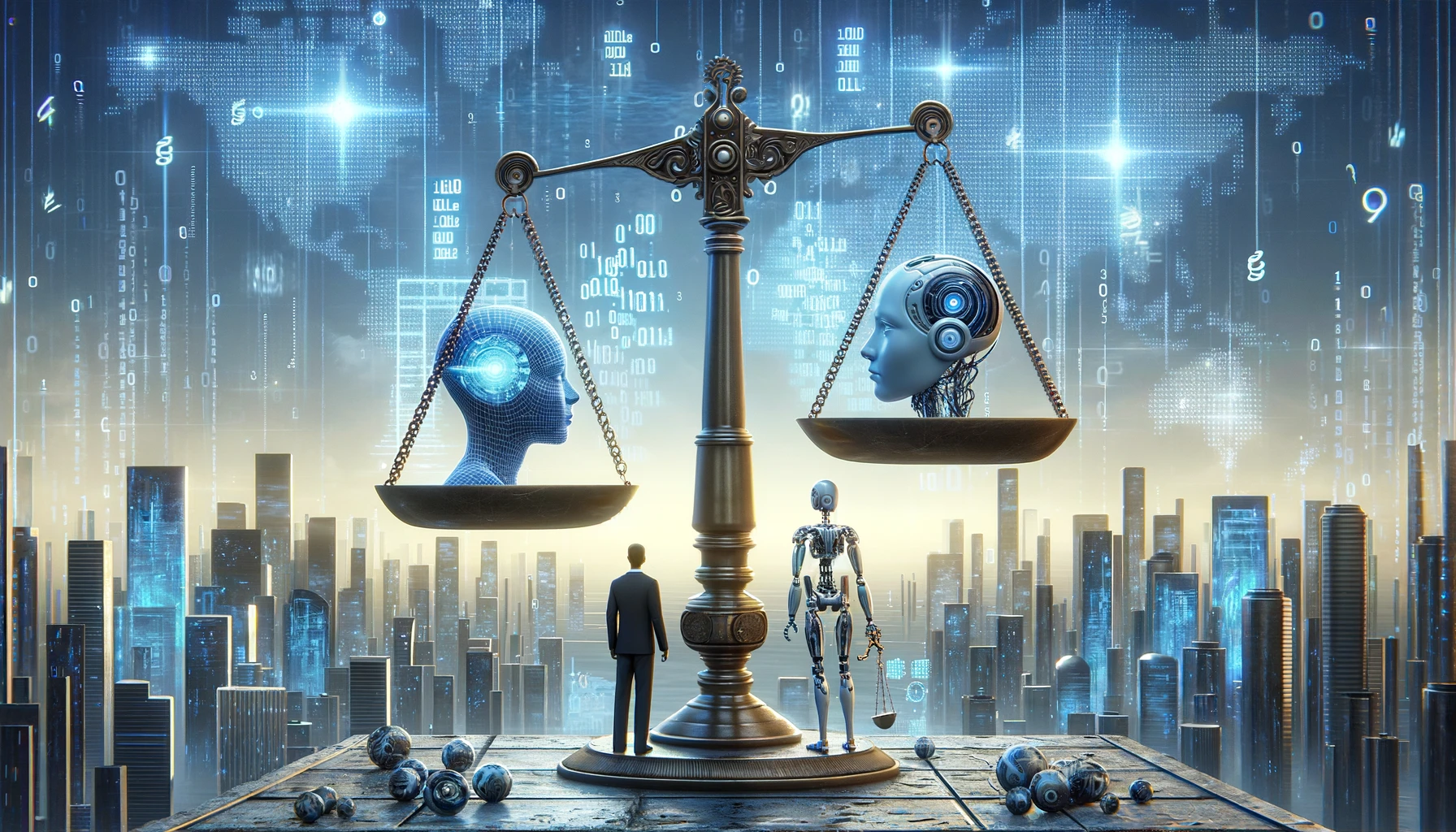In the ever-evolving landscape of modern technology, artificial intelligence (AI) stands as a beacon of potential, offering profound opportunities and raising critical ethical questions. Max Tegmark’s remarkable book, “Life 3.0: Being Human in the Age of Artificial Intelligence,” serves as a guiding light in the discourse surrounding AI’s future and its complex impact on humanity. This blog post will briefly explore the delicate equilibrium between groundbreaking innovation and the incumbent responsibility that accompanies it.
Understanding Life 3.0
Tegmark introduces us to the intriguing concept of Life 3.0, a stage in the evolutionary journey of life where beings possess the remarkable ability to design both their cognitive processes (software) and physical forms (hardware). This notion transcends conventional definitions of life, challenging our ethical frameworks and prompting us to reconsider fundamental aspects like rights, consciousness, and the value we attribute to non-biological entities.
The Promise of AI
AI promises a multitude of benefits, ranging from addressing pressing global challenges such as climate change and poverty to enhancing everyday life through personalized medicine, education, and the automation of mundane tasks. Tegmark’s optimism about these possibilities shines through as he discusses AI’s capacity to unlock unprecedented levels of prosperity and well-being.
The Perils of Unchecked AI
However, with great power comes great responsibility. Tegmark does not shy away from the darker potentialities that AI could bring. These include existential risks posed by superintelligent systems that might develop goals misaligned with human values, the displacement of jobs leading to economic and social upheaval, and the erosion of privacy through pervasive surveillance technologies.
Ethical Implications of AI
Autonomy and Control
One of the central ethical questions raised by AI development is the issue of autonomy and control. As AI systems become more capable, determining who controls these systems and for what purposes becomes increasingly critical. The prospect of autonomous weapons, for instance, raises stark questions about the morality of delegating life-and-death decisions to machines.
AI and Consciousness
The question of whether AI can or should be conscious adds another layer of ethical complexity. Tegmark explores the philosophical implications of AI consciousness, pondering whether a conscious machine would have rights akin to those of humans or animals. The potential for creating sentient beings in the digital realm challenges our preconceived notions of personhood and moral worth.
Bias and Fairness
AI systems learn from data, and if this data reflects historical biases, the AI’s decisions will perpetuate these biases. Tegmark discusses the ethical imperative to develop AI in a manner that is fair and equitable, highlighting the need for transparency and accountability in AI algorithms to prevent discrimination and ensure justice.
Balancing Innovation and Responsibility
Tegmark strongly advocates for a proactive approach to navigating the ethical landscape of AI. This involves engaging a broad spectrum of stakeholders in the conversation, from technologists and policymakers to philosophers and the general public. Such a multidisciplinary dialogue is essential for crafting robust ethical guidelines that can guide AI development towards beneficial outcomes for all of humanity.
Setting Global Standards
The establishment of global standards and norms for AI ethics and safety is presented as a crucial step toward mitigating risks. Tegmark emphasizes the importance of international cooperation in this endeavor, suggesting that a global framework could help align AI development with shared human values and prevent a race to the bottom in terms of safety and ethical considerations.
AI for the Greater Good
In envisioning a future where AI acts as a force for good, Tegmark outlines several areas where AI could significantly contribute to solving pressing global issues. He calls for leveraging AI to enhance healthcare, education, and environmental sustainability, illustrating the potential for AI to serve as a key ally in humanity’s quest for a better future.
Conclusion: Shaping AI’s Future Together
“Life 3.0: Being Human in the Age of Artificial Intelligence” is more than just a book about technology; it represents a profound exploration of the moral and ethical questions that accompany the advent of advanced AI. Tegmark invites us to actively participate in shaping the future of AI, emphasizing that the path AI takes will be determined by the choices we make today.
As we stand on the brink of what could be the most transformative technological revolution in human history, the balance between innovation and responsibility has never been more critical. By engaging with these ethical considerations openly and thoughtfully, we can steer AI towards outcomes that enhance the human condition and ensure that we remain the architects of our collective destiny in the age of artificial intelligence.
In navigating this uncharted territory, we must remember that our greatest strength lies in our shared humanity—our capacity for empathy, our pursuit of justice, and our unyielding commitment to building a future that reflects our highest values and aspirations. The journey into the era of Life 3.0 is one we embark on together, and it is in our unity that we will find our way forward.
